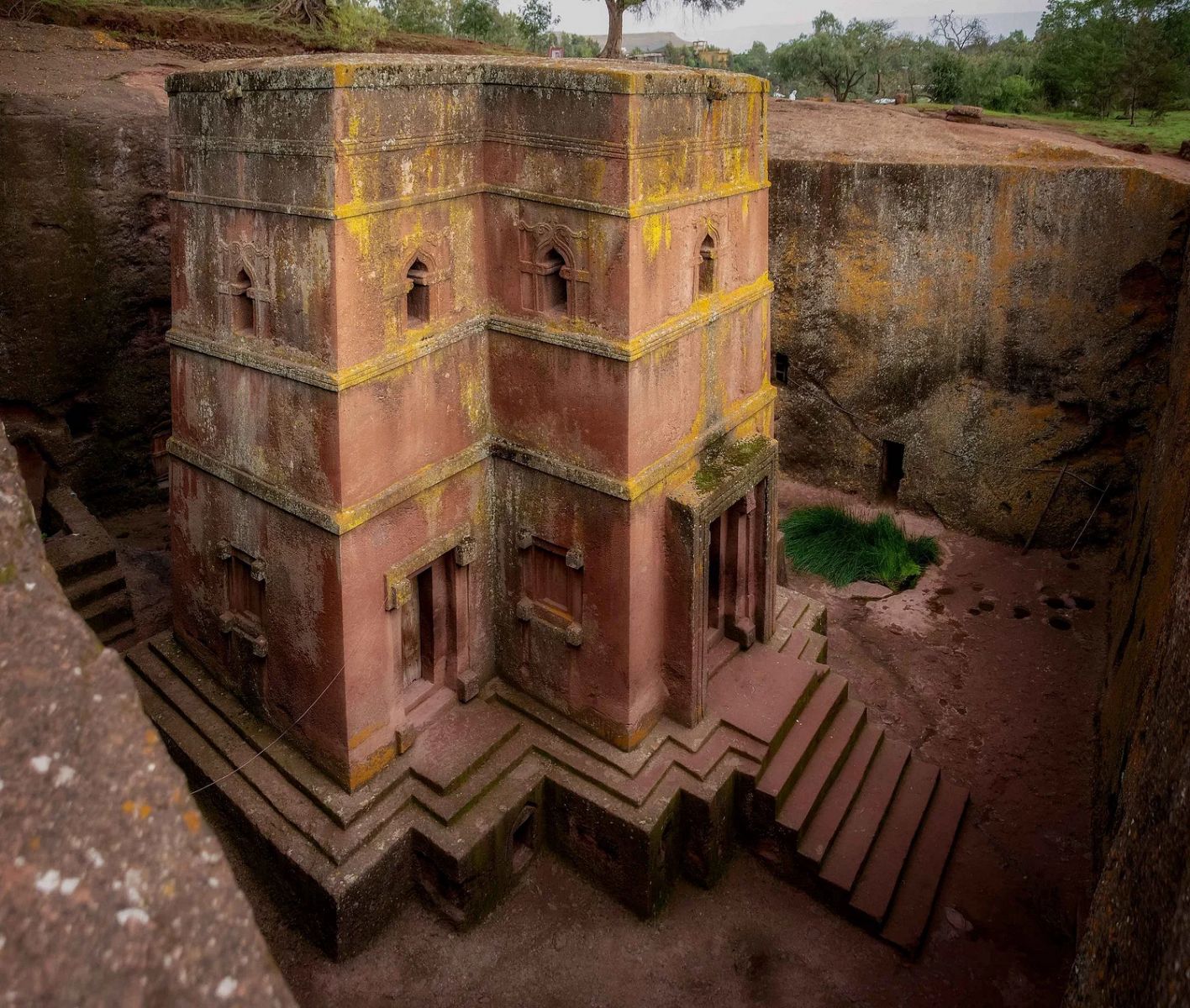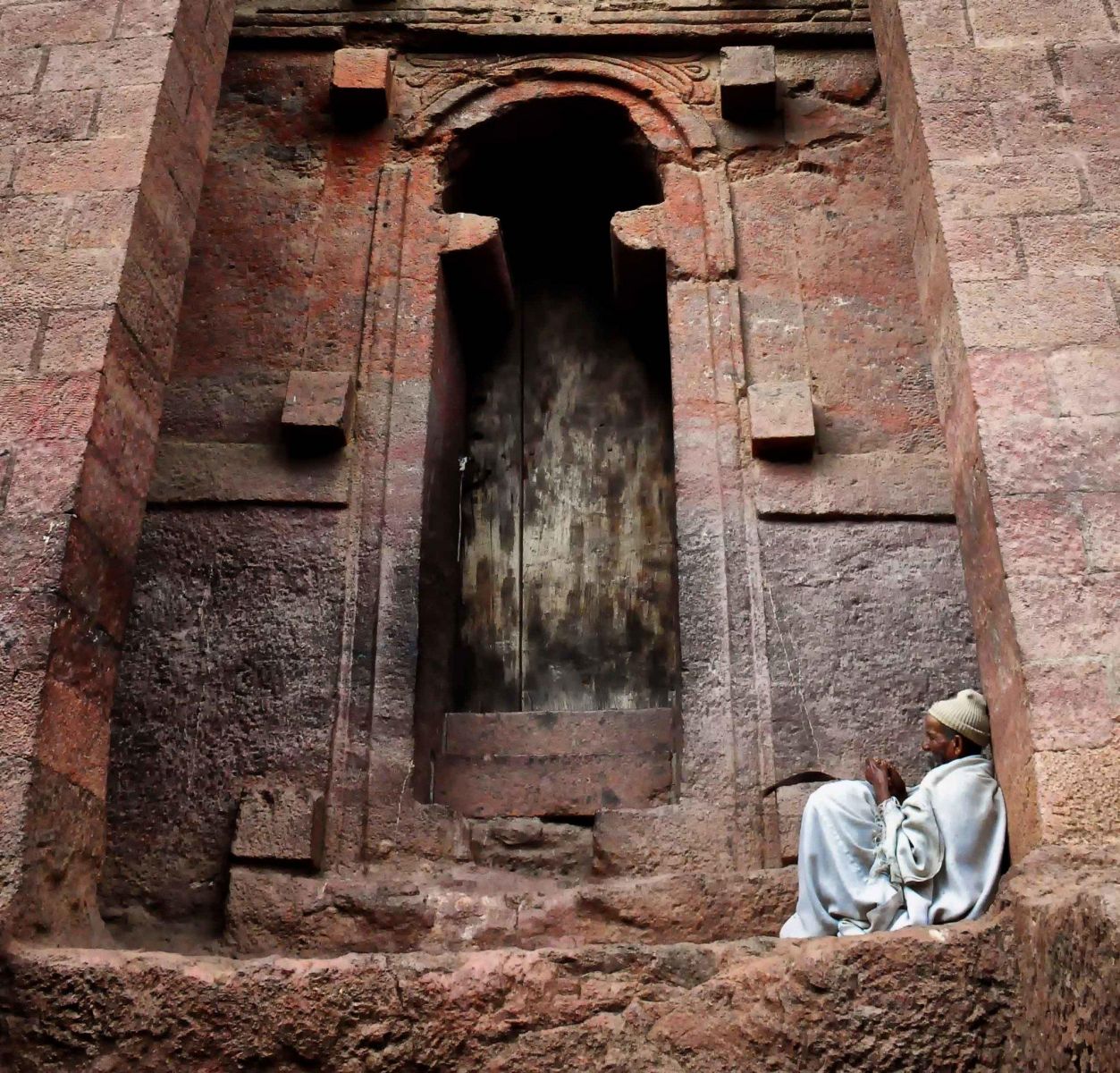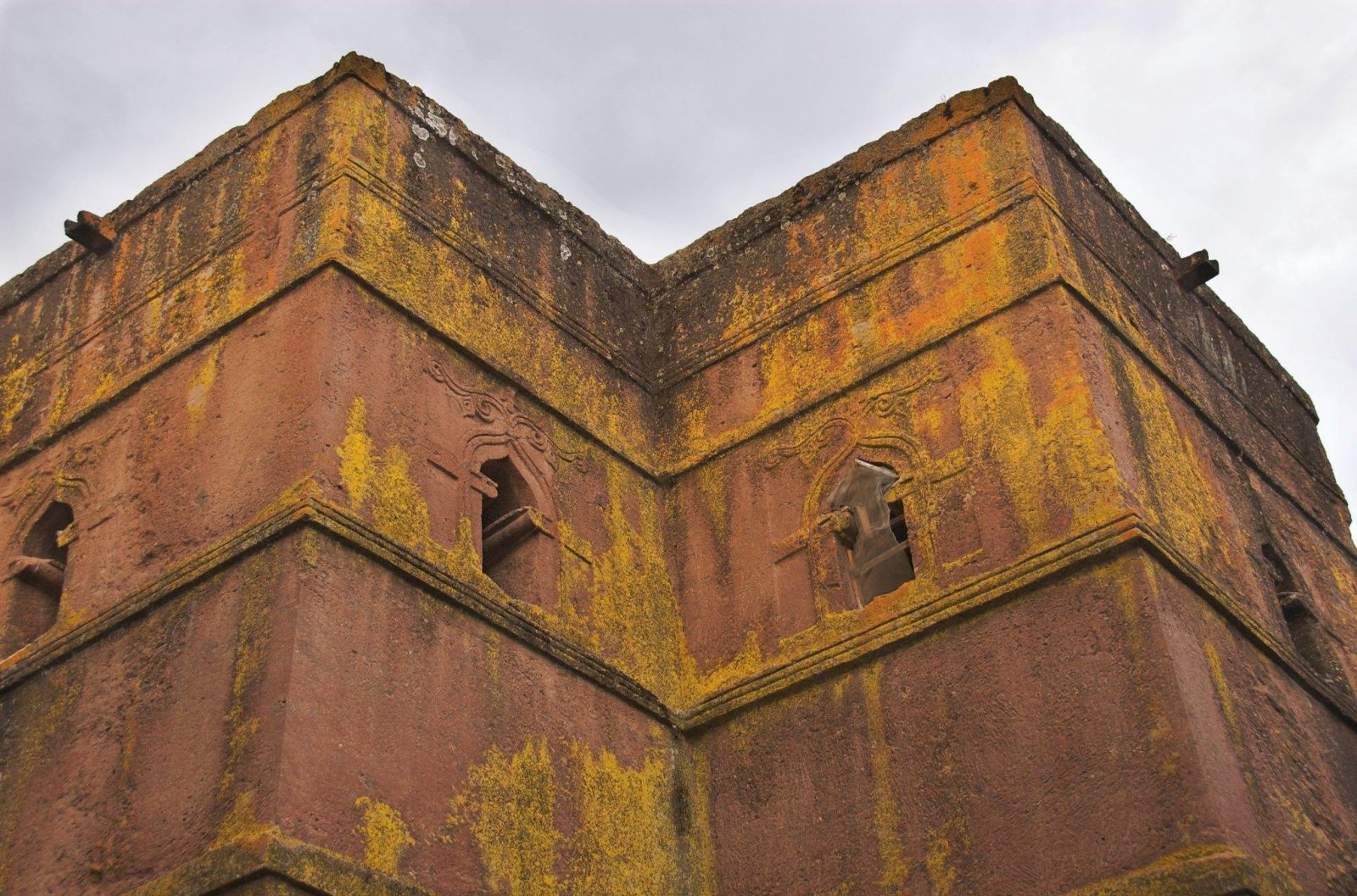Artists



Lalibela Church of St George - VM - James Romaine
The Church of Saint George

Image by Rod Waddington. Source: Flickr
Not Made By Human Hands
by James Romaine
The rock-cut church of Saint George, located in Lalibela Ethiopia, is one the most amazing structures in the history of architecture. Carved directly out of the rock that surrounds it, this sanctuary astounds the imagination.
Still in liturgical use, Saint George is a pilgrimage destination for both tourists and devout believers. Visitors reach the church through channels cut into the rock and emerge at the entrance-level of the church.
Saint George was commissioned by the Ethiopian King Lalibela, who ruled between around 1181 and 1221. Today, the entire region is called Lalibela, after the celebrated king. King Lalibela is the most famous Ethiopian ruler from the Zagwe dynasty. In fact, he has officially been made a saint in the Ethiopian Orthodox Church. Saint George is King Lalibela’s enduring legacy.
How this structure was carved out of the living rock still remains a mystery. Some Ethiopian Orthodox believers credit the creation of this church to supernatural intervention. According to tradition, when the human workers put down their tools at the end of the day, angels picked up the tools and carved through the night.
To create this church, workers, either human or angelic, cut directly into volcanic material. As they were excavating down toward what would be the church’s so-called ground level, carvers cut in doors and windows. And they hollowed out the interior of this monolith. The church emerged, seemingly by miracle, from the rock.


For some modern sceptics, the suggestion that this implausible structure was miraculously carved by a team of angles might have the same charming incredulity as the fairy tale about the old shoemaker who received the magical aid of elves. However, we should not be too quick to dismiss the value that this creation narrative has for helping us understand what this church meant to King Lalibela and to countless Ethiopian Orthodox believers. If we consider the church of Saint George from a perspective of faith, from a perspective of belief in the presence and power of miracles, then perhaps this creation narrative is more than just a myth.
Saint George is a house of God that emerges from the rock, a material that had been present there since the Genesis creation. Standing outside of human time, this structure of faith appears to have been miraculously created.
If the design and carving of this sacred sanctuary is ascribed to the supernatural, this rock-cut church might be perceived as an architectural parallel to the icons of the Orthodox church, which are also believed to be sacred in origin. The belief in miraculously created icons, icons not made by human hands, has been central to the liturgical tradition of the Orthodox Church.
Even without ascribing the creation of Saint George to the participation of angels, conceptualizing this rock-cut church, in the spiritual context of miraculous icons, answers many of the questions concerning both its purpose as well as the highly unusual process that gave it form.
If King Lalibela’s faith proceeded from a liturgical practice that venerated sacred icons, then the church in which he worshiped also needed to be supernatural in design. By crediting the creation of this church to angelic labor, the Ethiopian Orthodox Christian proclaims it to be a sacred sanctuary, fit to be the residence of the divine. A God who cannot be constrained by human achievements has ordained his own creation, the rock itself, as his residence.
Perhaps the belief that the Church of Saint George was miraculously created consecrated the structure, in the spiritual imagination of the Ethiopian Orthodox Christian, for its liturgical purpose. The narrative that this structure was extracted from the living rock by angels unites its design and creation with its identity as the dwelling place of the uncreated God.
Even for those who might not fully embrace this creation narrative, standing before or within this magnificent structure the beholder has a sense of being in the presence not of any human architect but of the divine creator of the rock itself.
*******
James Romaine is Professor of Art History in the Department of History & Philosophy at Lander University in Greenwood, SC, USA. He is a co-founder of the Association of Scholars of Christianity in the History of Art (ASCHA). His scholarship has recently been published in The Artistic Sphere, The Arts in Neo-Calvinist Perspective (IVP Academic, 2024) and Religion and Contemporary Art: A Curious Accord (Routledge, 2023). His videos can be viewed on YouTube at Seeing Art History, including a three-part series on the Church of Saint George at Lalibela in Ethiopia.
-
Historical Context, https://youtu.be/IuDv1T_ghJM
-
Form and Process, https://youtu.be/Dt83xTDAud8
-
Liturgical Purpose, https://youtu.be/PRcG58iBDok
ArtWay Visual Meditation 14 April 2024


